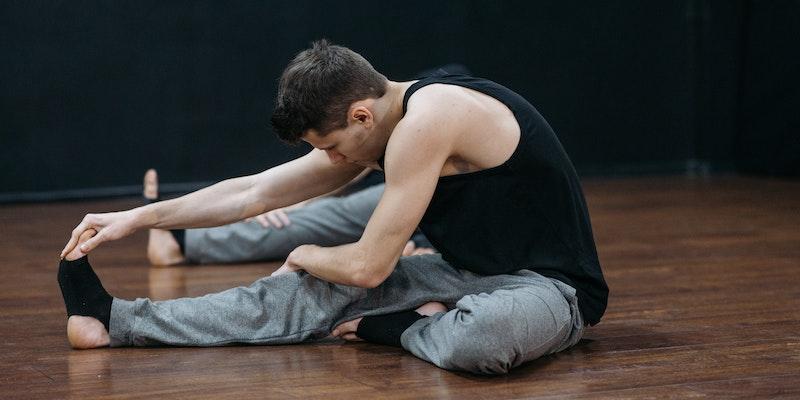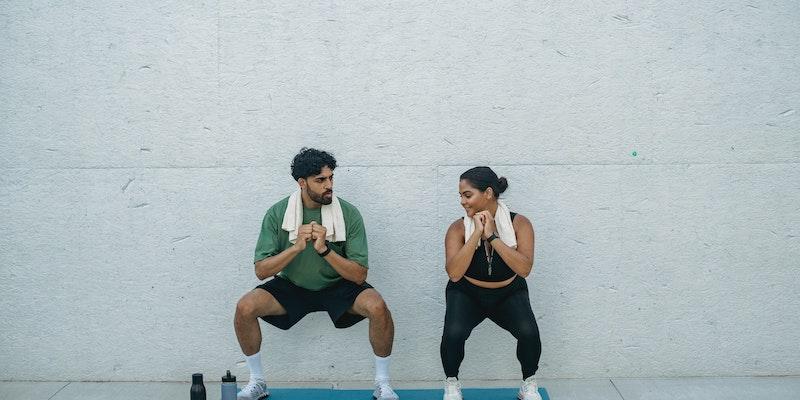Strengthen and Soothe: 6 Workouts for Knee Discomfort
Oct 11, 2023 By Madison Evans
Knee pain is a common complaint amongst individuals of all ages. From minor twinges to debilitating discomfort, it can hinder everyday activities and diminish the quality of life. While various treatments are available, including using a pain-relieving knee brace or over-the-counter knee pain reliever, introducing exercises to relieve knee pain can be an effective and natural method to manage and alleviate symptoms.
Below, we discuss the six exercises specifically designed to provide relief. However, consult a healthcare professional before starting any new exercise regimen, especially if your knee pain is due to a specific medical condition.
1. Quadriceps Stretch
The intricate dance of life often revolves around our ability to move freely and without pain. One of the most crucial players in this dance is our knees, which bear the brunt of our daily activities. The muscular quadriceps muscles on the front of our thighs extend and stabilize our knees. If these muscles are tight or out of balance, knee pain might result. The Quadriceps Stretch, a simple yet highly effective exercise, can salve to this discomfort, ensuring the harmony in the dance of our movements remains unbroken.
How to do it
- Stand against a wall or strong furniture for balance.
- Bend your knee and bring your heel toward your buttocks.
- Using the hand on the same side, hold onto your ankle.
- Pull your heel closer to your buttocks while keeping your knees together and ensuring your knee points downward.
- Stay stretched for 20–30 seconds.
- Repeat 2-3 times per leg.
- This exercise reduces quadriceps strain and increases flexibility, relieving knee pain.
2. Hamstring Stretch

Journey to the back of your thigh, and you'll find the hamstrings - a group of muscles that are as essential as they are often overlooked. They directly relate to our knees, influencing their movement and flexibility. Like the strings of a musical instrument, when they're too tight or misaligned, the melody of our motion can turn sour. The Hamstring Stretch is the tune-up your body might be silently yearning for, offering relief and a return to the symphony of seamless movement.
How to do it
- Sit with straight legs.
- Put the inside of your straight leg's thigh against the bottom of your bent knee.
- Put your weight onto the ball of your foot and lean forward from the hips.
- Hold 20-30 seconds.
- Repeat 2-3 times for each leg.
3. Calf Stretch
Peek below the knee, and you'll discover the calf muscles, the unsung heroes that play a pivotal role in our gait and balance. Every step we take, every leap we make, they support and propel us forward. However, when they tighten, they can tweak the delicate balance of the knee joint, sometimes resulting in pain. The Calf Stretch, an exercise as grounding as it sounds, helps realign this balance, ensuring our steps are as pain-free as they are purposeful.
How to do it
- Place your hands on the wall and face it while standing upright.
- Keep the heel down as you take a backward step.
- Kneel down with the front leg bent and the back leg straight.
- To feel a stretch in the calf of your back leg, thrust your hips forward.
- Hold for 20-30 seconds.
- Switch legs and repeat.
4. Straight Leg Raise
At the intersection of strength and balance lies the Straight Leg Raise, an exercise that hones in on the quadriceps without putting undue strain on our precious knees as we face physical challenges, ensuring that the muscles supporting our knee joints are robust, becomes imperative. This exercise is not about lifting the heaviest weights or achieving the highest leaps. Instead, it's a testament to the subtlety of strength, proving that even the simplest of movements can create powerful ripples in our well-being.
How to do it
- Lay on your back with one leg bent and one straight.
- Raise the straight leg to the bent knee by tightening your quadriceps.
- Wait a few seconds, then slowly lower.
- Perform 10-15 repetitions and then switch legs.
- Incorporating this exercise into your routine can also be complemented with a pain-relieving knee brace, optimizing support for the joint during movement.
5. Step Ups
Every ascent, whether climbing a mountain or conquering life's challenges, starts with a single step. Step Ups, as fundamental as they sound, embody this philosophy. They're not just exercises; they celebrate our body's capability to rise, literally and metaphorically. By engaging multiple leg muscles, this exercise fortifies the foundation of our knees. Each repetition shows our resilience and our body's drive to rise, even in difficult circumstances.
How to do it
- Stand in front of a step or a low bench.
- Step onto it with one foot, then bring the other foot up.
- Step back down and repeat.
- Aim for 10-15 repetitions on each leg.
- Consider using a knee pain reliever or wearing a pain-relieving knee brace for added support and comfort during this activity.
6. Wall Squats

Nestled between the realms of endurance and strength lies the Wall Squat. A testament to the might of the human spirit, this exercise invites us to push against our limitations, quite literally. It beckons us to find strength even in stillness, teaching our legs and, by extension, our knees the art of resilience. As the back presses against the wall and the legs engage, we create physical fortitude and a belief that we can overcome challenges.
How to do it
- Keep your back against a wall.
- Sliding down to 90 degrees with your knees.
- Ensure your knees are directly above your ankles.
- Hold the position for 10-30 seconds, then slowly slide up.
- Repeat 5-10 times.
Wall squats are efficient exercises to relieve knee pain and can be made even more comfortable by wearing a pain-relieving knee brace during the activity.
Conclusion
While these exercises effectively relieve knee discomfort, it's essential to incorporate them gradually and pay attention to form. Incorrect techniques can exacerbate knee pain. If any movement causes sharp pain, stop immediately. Wearing a pain-relieving knee brace can provide additional support during exercises and daily activities. Moreover, consider the benefits of over-the-counter knee pain reliever products as a supplementary approach.
Incorporate these exercises into your routine and over time. You'll likely notice a decrease in pain and an increase in knee joint flexibility and strength. Your knees, after all, play a pivotal role in your mobility and deserve the best care.







